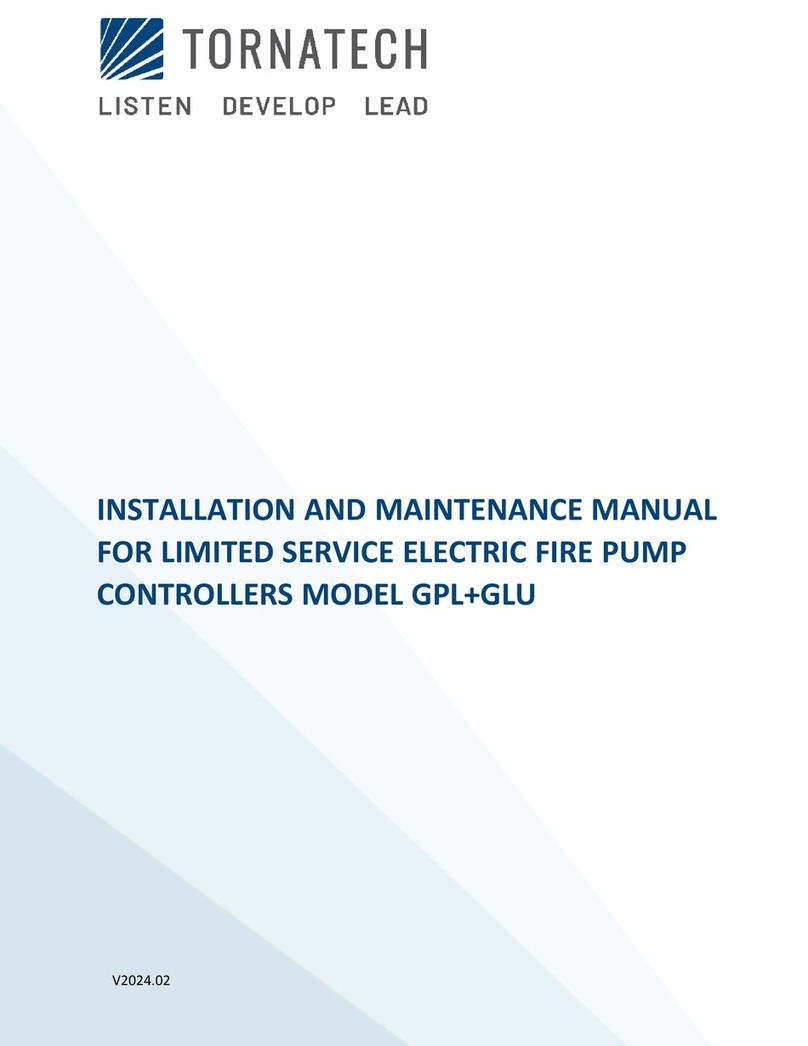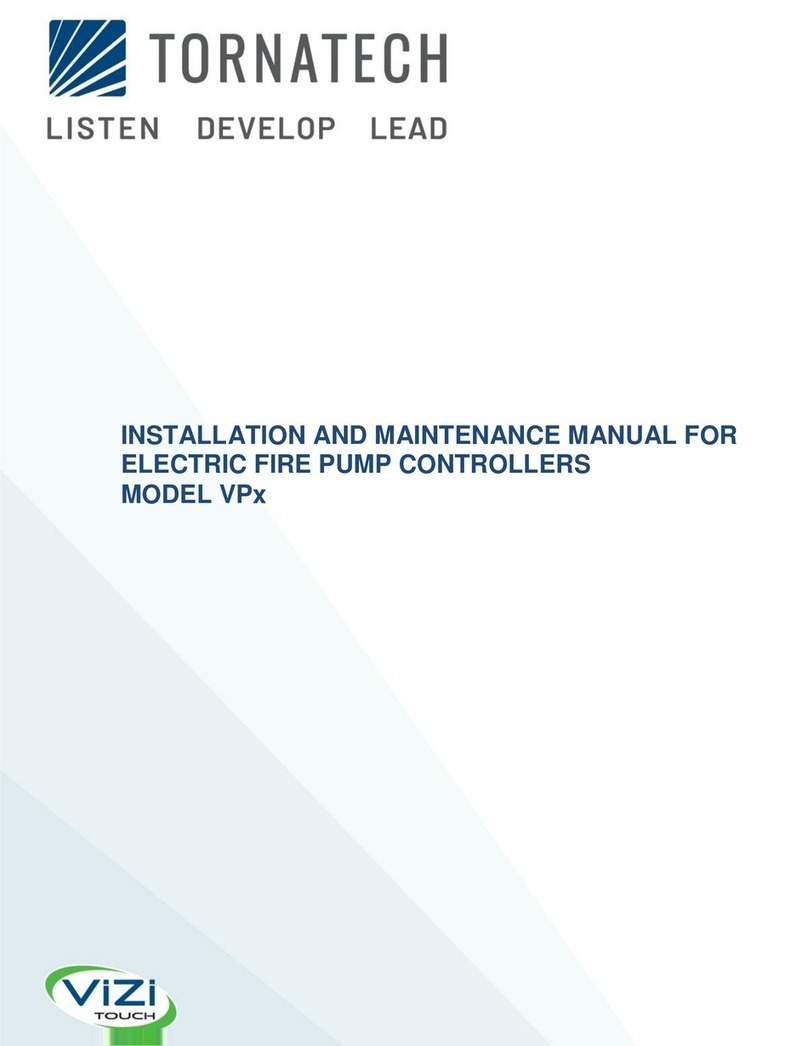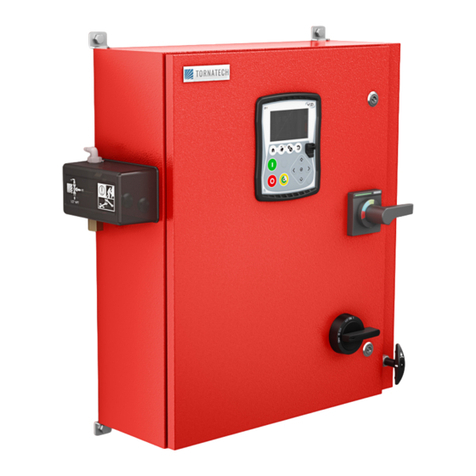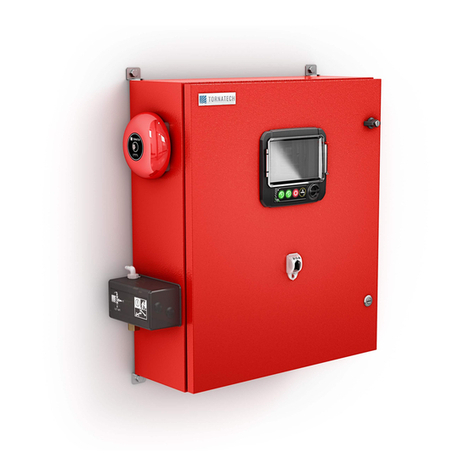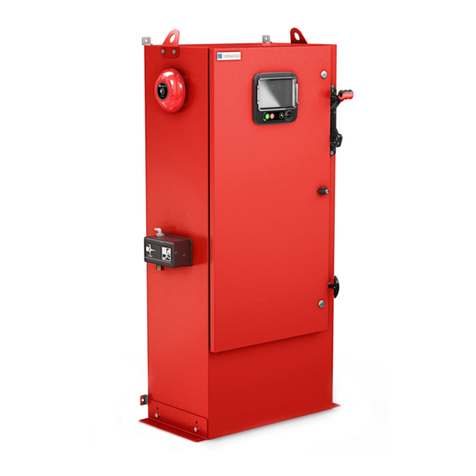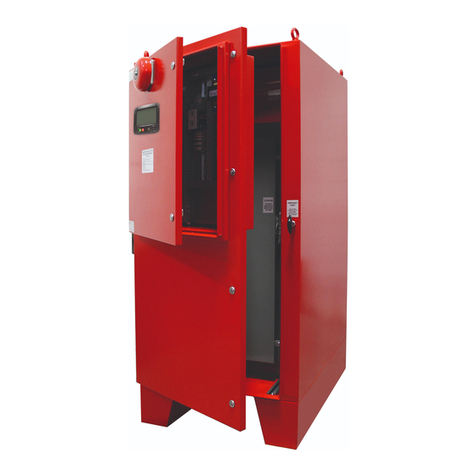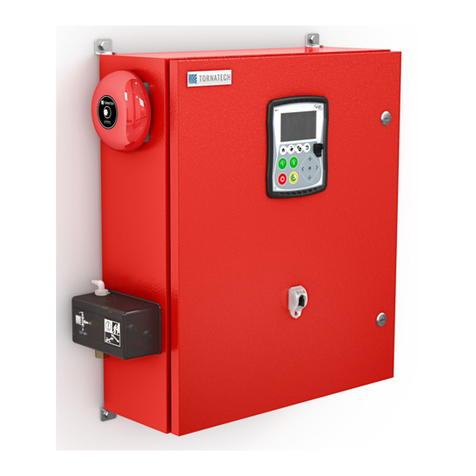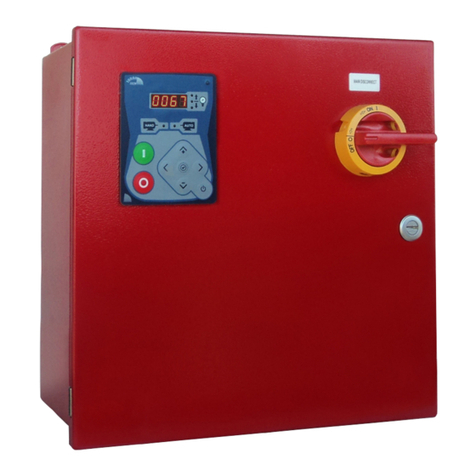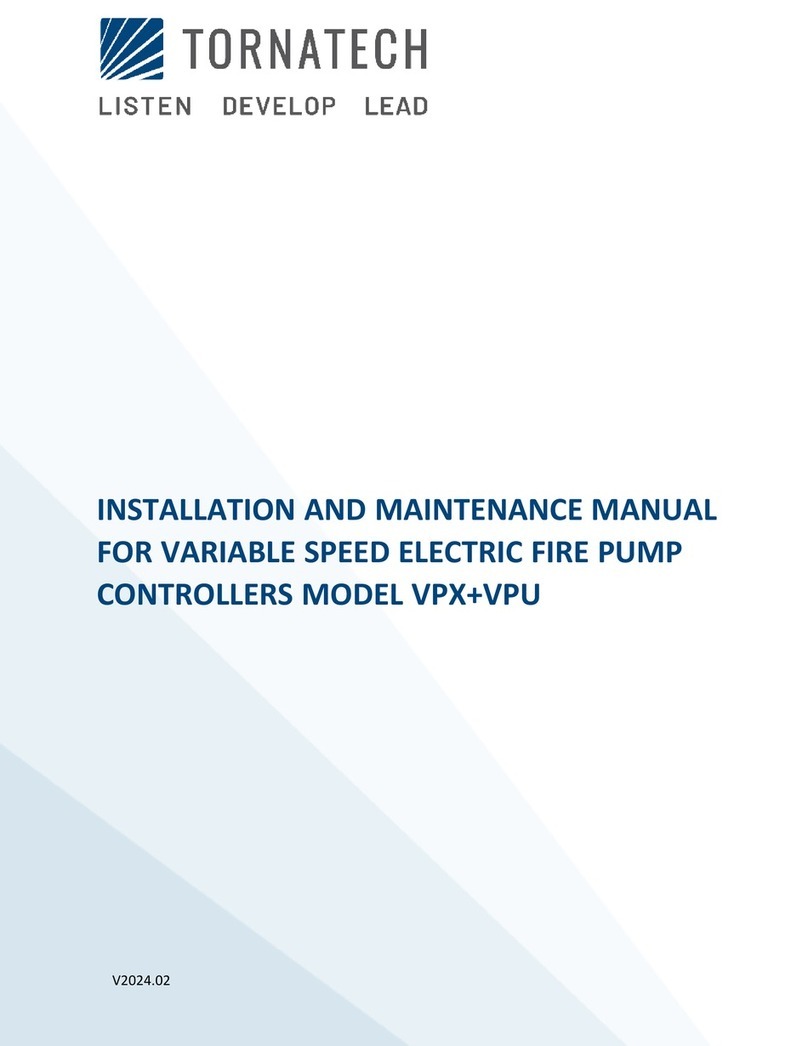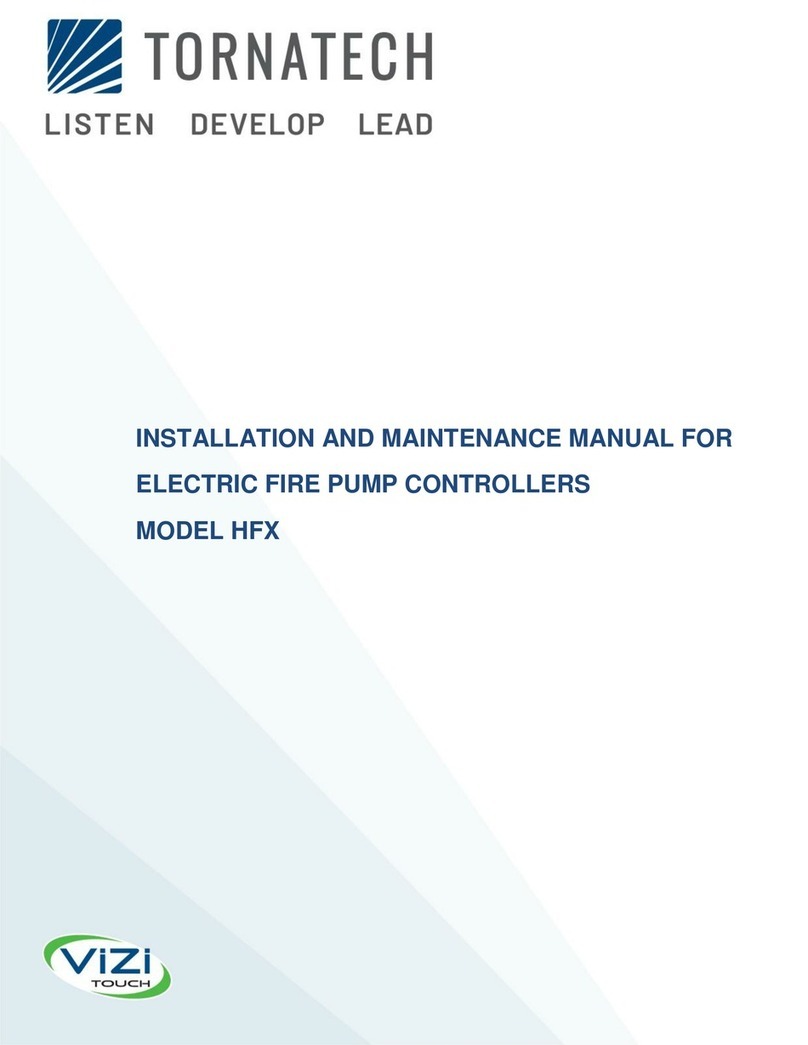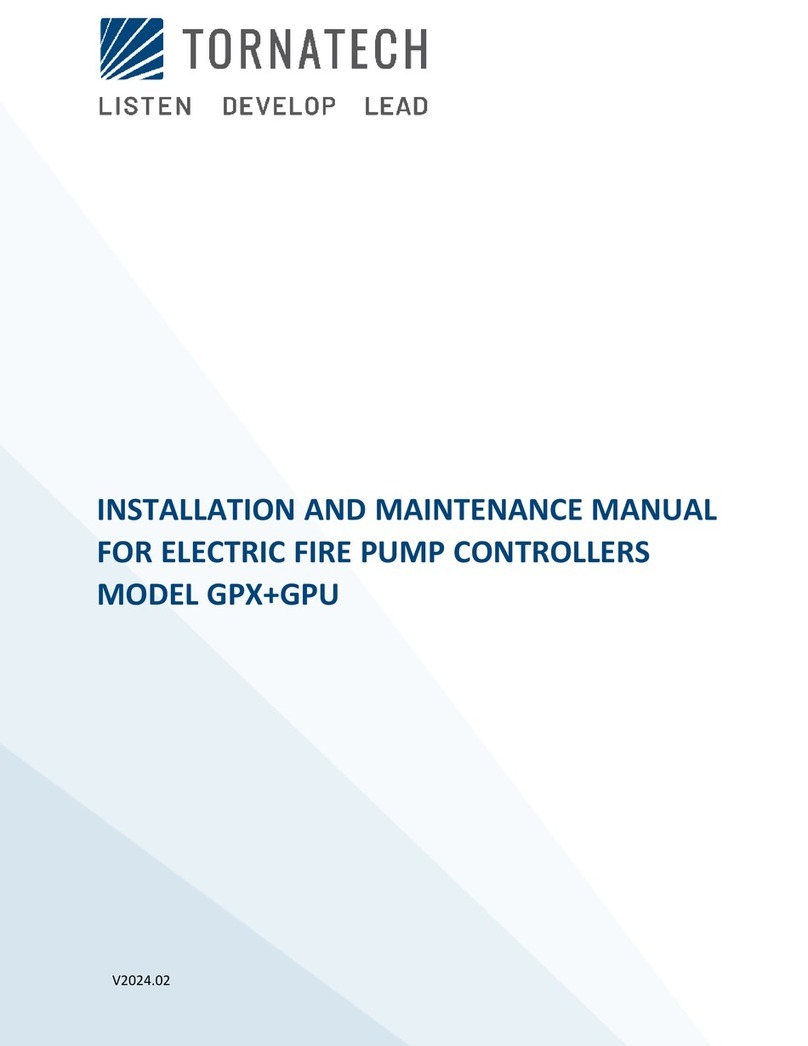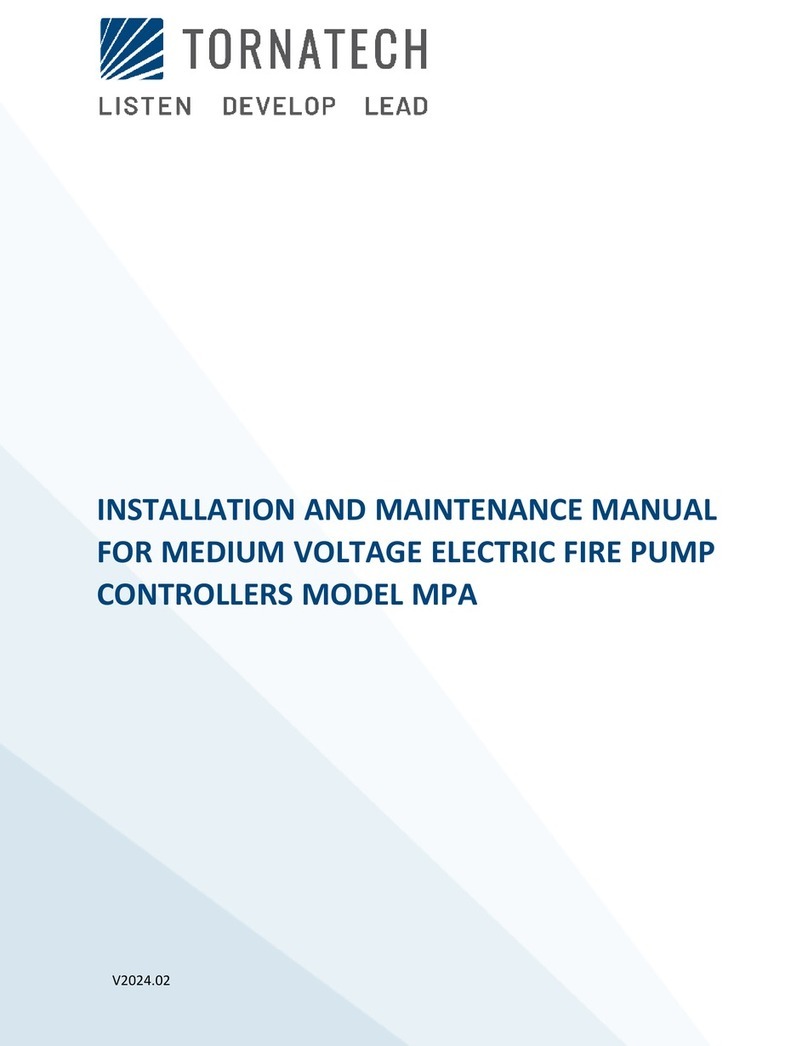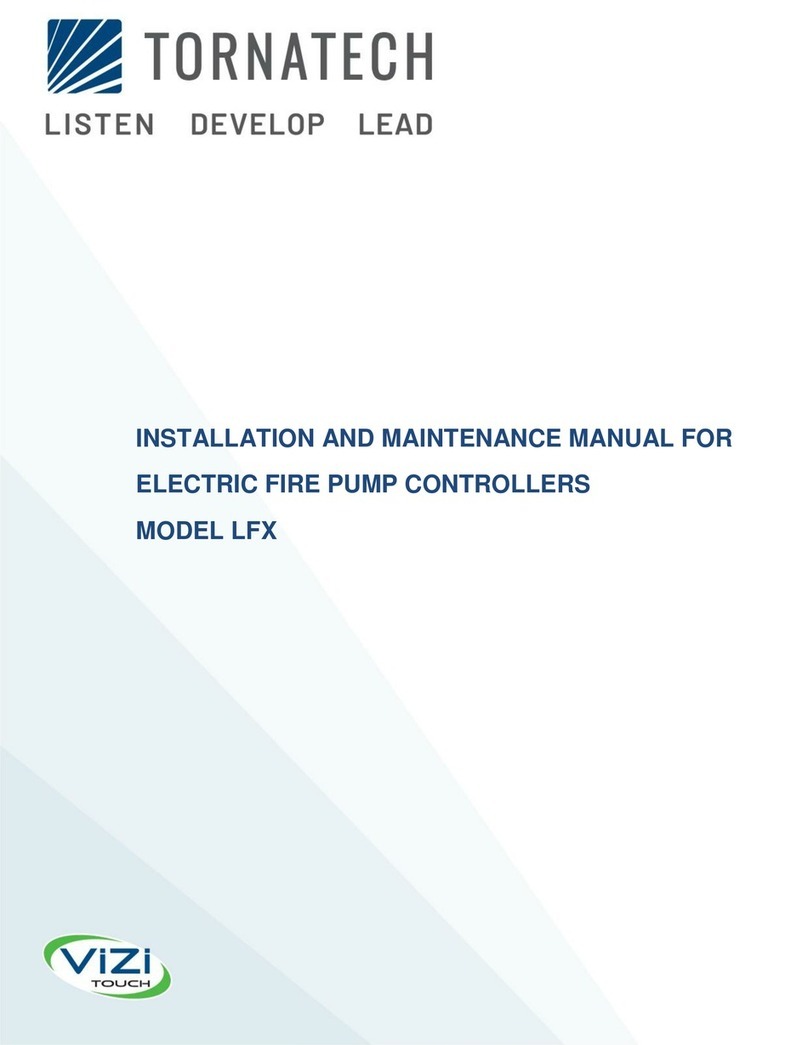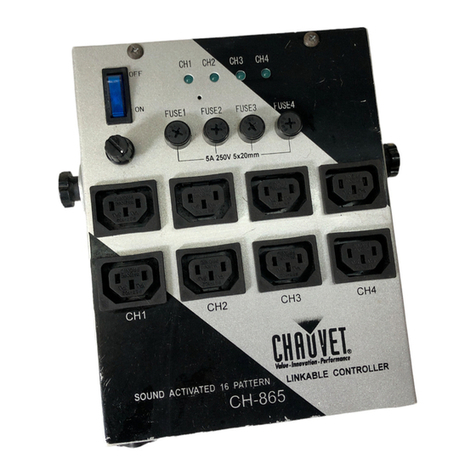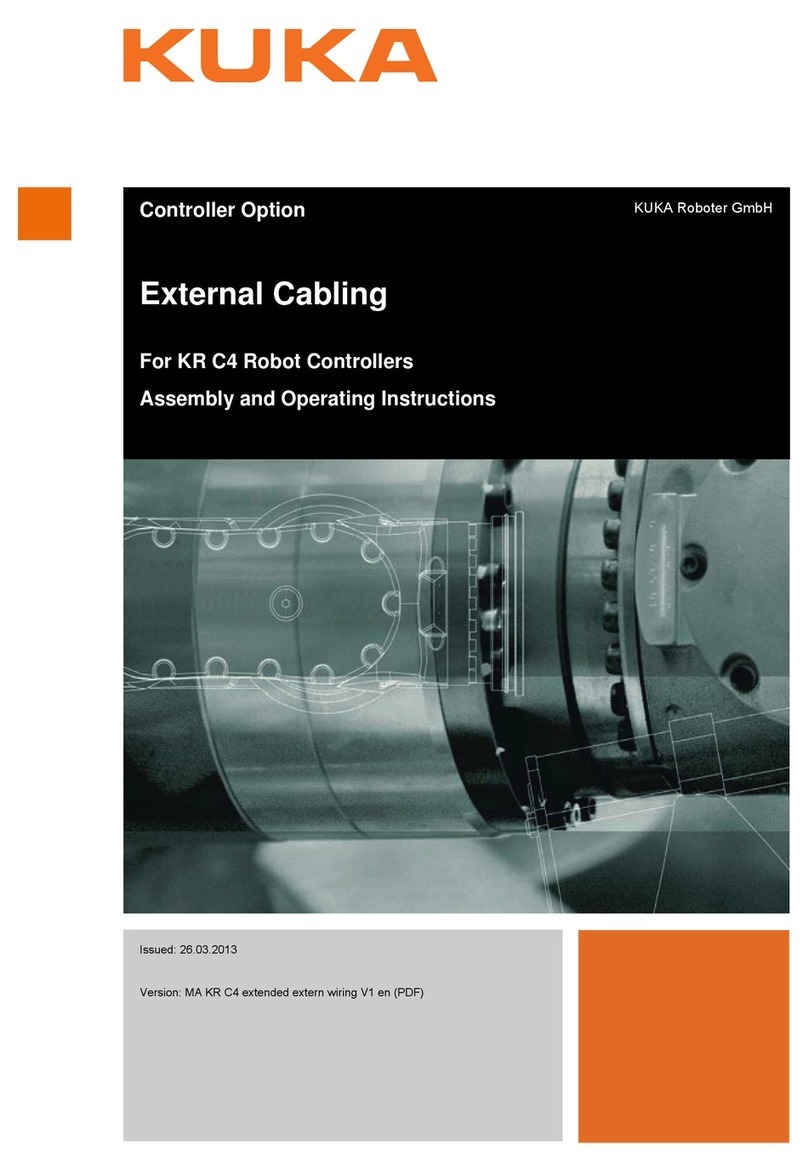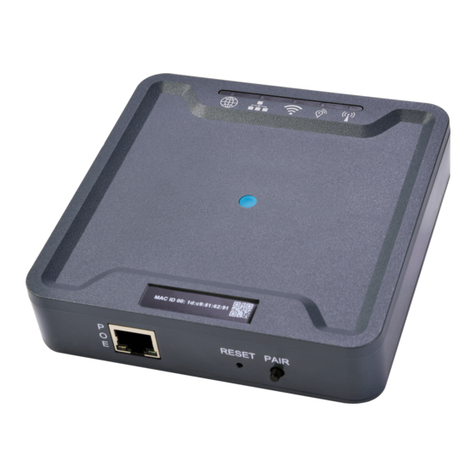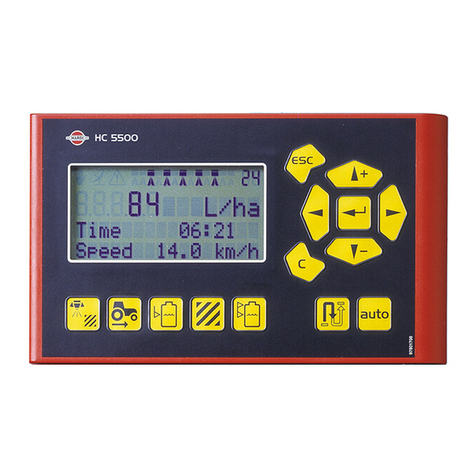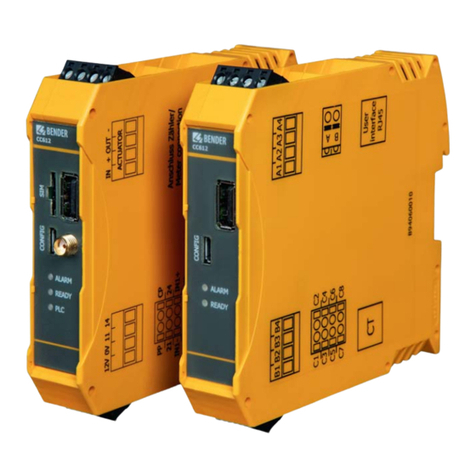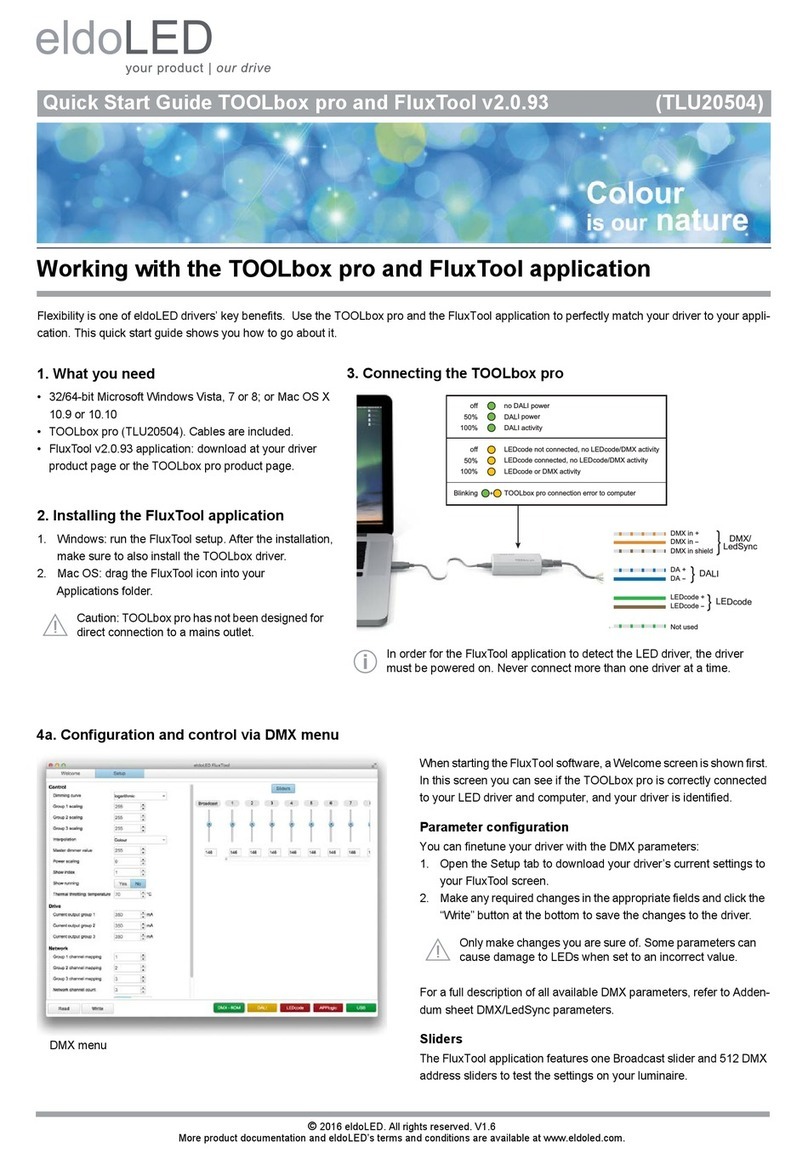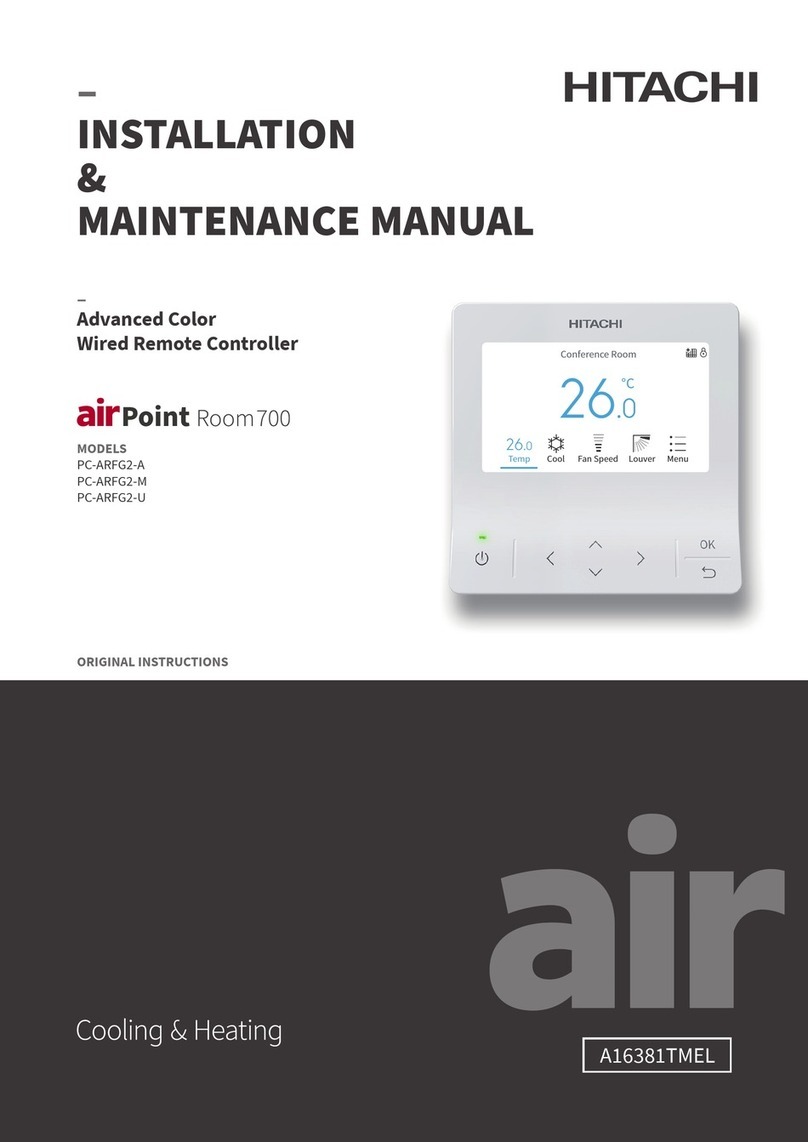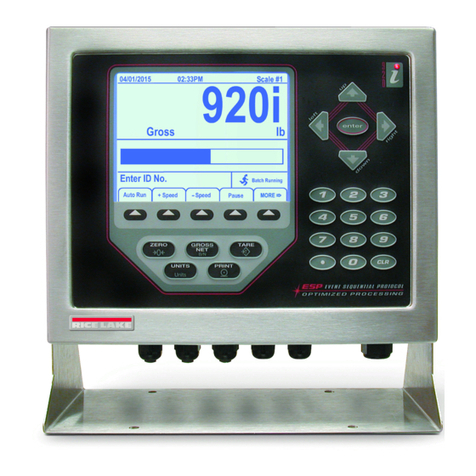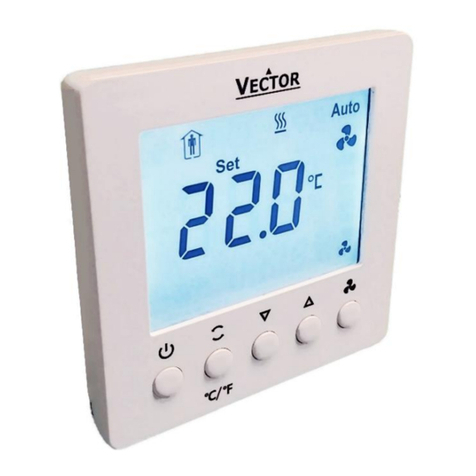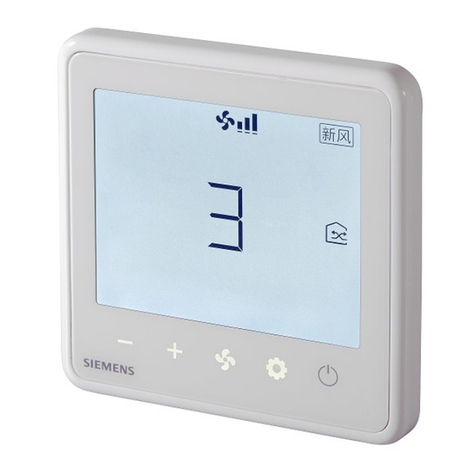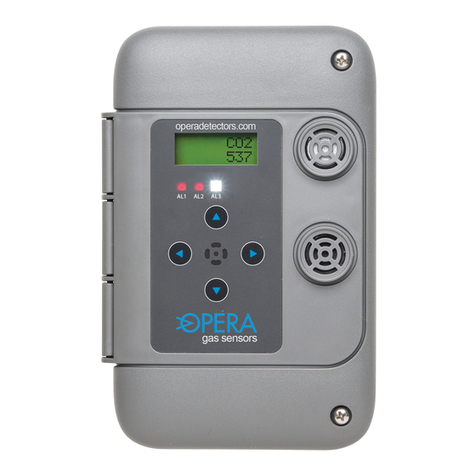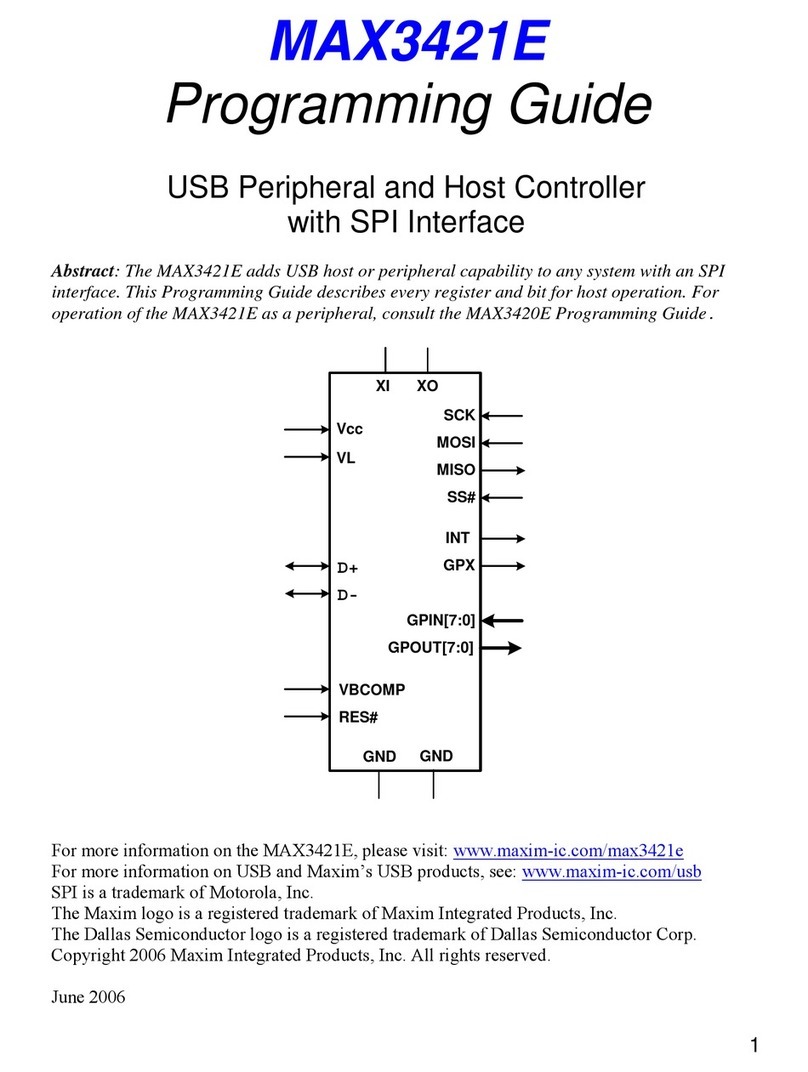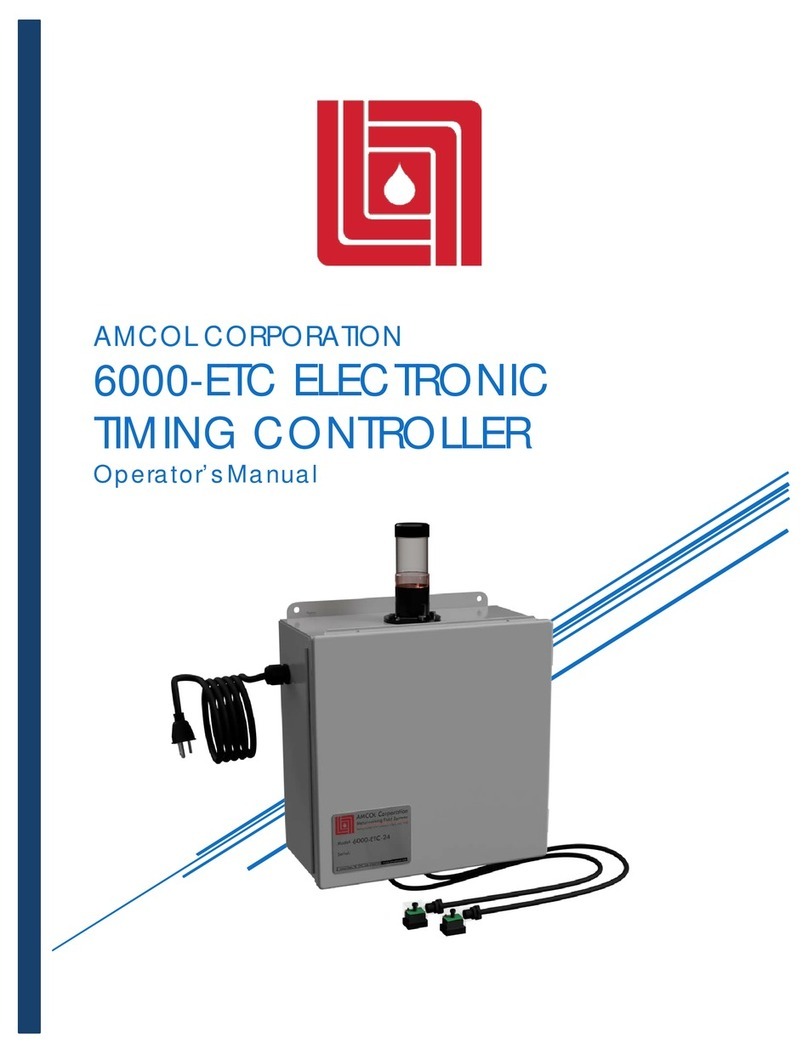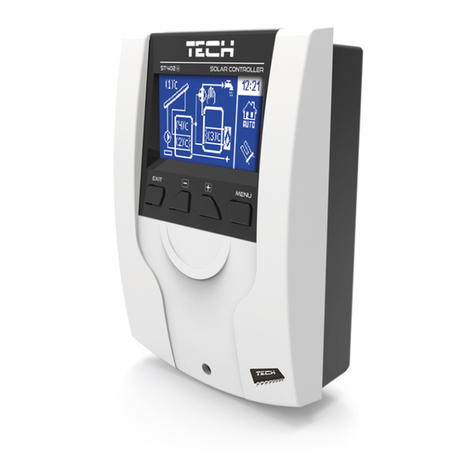Tornatech HFD Manual

1
INSTALLATION AND MAINTENANCE MANUAL FOR
DIESEL ENGINE FIRE PUMP CONTROLLERS
MODEL HFD

2
HFD-Manual-EN v1.4.0.0
Table of Contents
1. Introduction
2. Installation
3. Main Features
4. Home
5. Alarms
6. Configuration
7. History
8. Technical Documents

3
Table of Contents
Introduction......................................................................................................................................................................5
Types of Diesel Engine Fire Pump Controllers..........................................................................................................5
Methods of Starting/Stopping.....................................................................................................................................5
Installation.......................................................................................................................................................................7
Location......................................................................................................................................................................7
Mounting ....................................................................................................................................................................7
Storage.......................................................................................................................................................................7
Wiring and Connections.............................................................................................................................................7
Electrical Connections................................................................................................................................................7
Energy Consumption..................................................................................................................................................8
Sizing..........................................................................................................................................................................8
Incoming Power Connections ....................................................................................................................................8
Circuit protection ........................................................................................................................................................8
Terminal Strip Descriptions........................................................................................................................................9
Quick Start-Up Guide...............................................................................................................................................10
Main Features ...............................................................................................................................................................14
The ViZiTouch..........................................................................................................................................................14
Alarm Bell.................................................................................................................................................................15
First Setup................................................................................................................................................................15
Home.............................................................................................................................................................................16
Home (Membrane button)........................................................................................................................................16
Screen Saver ...........................................................................................................................................................17
Alarms...........................................................................................................................................................................18
Alarms (Membrane button) ......................................................................................................................................18
Configuration.................................................................................................................................................................21
Config (Membrane button).......................................................................................................................................21
NumPad Page..........................................................................................................................................................22
Date and Time Page................................................................................................................................................22
User Login Page / KeyPad Page .............................................................................................................................23
Advanced Configuration Page .................................................................................................................................24
Details of the Advanced Configuration Page...........................................................................................................24
Volt-Current Calibration............................................................................................................................................24
Timers Page.............................................................................................................................................................26
Inputs/Outputs Configuration ...................................................................................................................................27
Inputs/Outputs Expansion board 1-2-3-4.................................................................................................................29
Update Program Page .............................................................................................................................................30
Factory Settings .......................................................................................................................................................30
Reset to Factory Settings Page ...............................................................................................................................31
The Sensors Pages..................................................................................................................................................32
H) Tachometer (Engine Speed Switch) ...................................................................................................................32

4
I) Engine Coolant Temperature................................................................................................................................33
J) Engine Oil Pressure.............................................................................................................................................34
K) Fuel Level............................................................................................................................................................35
Details of the Debug Page.......................................................................................................................................35
Calibration................................................................................................................................................................35
IO Debug..................................................................................................................................................................36
Inputs/Outputs Debug..............................................................................................................................................36
Interlock Lockout......................................................................................................................................................36
History...........................................................................................................................................................................38
History (Membrane button) ......................................................................................................................................38
Details of the History Page ......................................................................................................................................39
Events Page.............................................................................................................................................................39
Download to USB Device.........................................................................................................................................39
The Statistics............................................................................................................................................................41
All Time Statistics.....................................................................................................................................................41
Technical Documents....................................................................................................................................................42

5
Diesel engine fire pump controllers are designed to automatically start a diesel engine driven fire pump upon
detection of an automatic start pressure switch in the fire protection system. A diesel engine fire pump controller
provides automatic & manual starting. An automatic start is controlled by a pressure switch or by remote automatic
devices as deluge valve. The "Operate Manual Start Test Pushbutton" implements a way to simulate the use of the
"Emergency Pushbutton" by being activated after an automatic start followed by a stopping of the Firepump, or
following a "Engine Fail to Start" alarm. A manual start is controlled by an Emergency Start pushbutton, hardwired to
the relay board, that can securely start the engine. The diesel engine fire pump controller includes two battery
chargers to maintain the engine batteries continuously charged.
Types of Diesel Engine Fire Pump Controllers
FIRE PUMP CATALOG NUMBER
MODEL No. EXAMPLE : HFD-12-220
Model Prefix HFD
Battery Voltage 12 : 12V 24 : 24V
Incoming Voltage 220: 208/240V 50/60Hz
Methods of Starting/Stopping
The controllers are available as combination automatic / non-automatic.
METHODS OF STARTING
MANUAL START
The automatic engine cranking sequence can be started by pressing the START push button on the ViZiTouch.
REMOTE MANUAL START
The engine can be started from a remote location by momentarily closing a contact of a manual push button.
OPERATE MANUAL START TEST
The engine can be started by using this pushbutton after a “Fail to Start” alarm or after an automatic start followed by
a stop. This method of starting will activate the last cranking starters that did not attempt to crank, and is in parallel
with the “Emergency Start” button.
EMERGENCY START
The engine can be started from the Emergency Start Push Button located behind the breakable cover.
REMOTE AUTOMATIC START, DELUGE VALVE START
The engine can be started from a remote location by momentarily opening a contact of a pressure switch.
SEQUENTIAL START
In case of a multiple pump application, it may be necessary to delay the starting of each motor when there is a water
pressure drop to prevent simultaneous starting of all motors.
METHODS OF STOPPING
MANUAL STOP
Manual stop is done by pressing the STOP push button. Note that pressing the stop push button will stop the engine
only if all starting causes have disappeared.
Introduction

6
EMERGENCY STOP
The emergency stop is always possible in any running condition and is done by pressing the Stop pushbutton for 8
seconds. This will activate the “Auto Mode Bypass”, stopping the engine and preventing the engine from starting
automatically. Use only for maintenance operations..

7
The controller is built in accordance with the latest edition of the EN-12845 Standard, and also based on the National
Fire Protection Association standard for the Installation of Centrifugal Fire Pumps, NFPA No.20 (Centrifugal Fire
Pumps 2013 Edition).
This controller is designed to be used with non-approved engine, using the control by analog senders (Magnetic
pickup, oil pressure and engine temperature senders, all shown using on-screen gauges on the ViZiTouch. Find
more information on the senders section of this manual.
Location
The controller shall be located as close as practical to the engine/motor it controls and shall be within sight of the
engine/motor. The controller shall be located or protected such that it will not be damaged by water escaping from
pump or pump connections. Current carrying parts of the controller shall be not less than 12 in. (305 mm) above the
floor level.
The controller is suitable for use in locations subject to a moderate degree of moisture, such as a damp basement.
The pump room ambient temperature shall be between 39°F (4°C) and 104°F (40°C) (If a temperature option is
included, see the rating label for maximum temperature).
The standard controller enclosure is rated IP 55. It is the installer's responsibility to insure that either the standard
enclosure meets the ambient conditions or that an enclosure with an appropriate rating has been provided.
Controllers must be installed inside a building and they are not designed for outside environment. The paint color
may change if the controller is exposed to ultraviolet rays for a long period of time.
Mounting
The fire pump controller shall be mounted in a substantial manner on a single incombustible supporting structure.
Wall mounted controllers shall be attached to the structure or wall using all four (4) mounting ears provided on the
controller with hardware designed to support the weight of the controller at a height not less than 12 in. (305 mm)
above floor level. Floor mounted controllers shall be attached to the floor using all holes provided on the mounting
feet with hardware designed to support the weight of the controller. The mounting feet provide the necessary 12 in.
(305 mm) clearance for current carrying parts.
Storage
If the controller is not installed and energized immediately, Tornatech recommend following the instructions from the
chapter 3 of the NEMA ICS 15 standard.
Wiring and Connections
Electrical Connections
A licensed electrician must supervise the electrical connections. The dimension drawings show the area suitable for
incoming power and motor connections. No other location shall be used. Only watertight hub fittings shall be used
when entering the cabinet to preserve the IP rating of the cabinet. The installer is responsible for adequate protection
of the fire pump controller components against metallic debris or drilling chips. Failure to do so may cause injuries to
personnel, damage the controller and subsequently void warranty.
Installation

8
Energy Consumption
Diesel Controller with boost charger
Model / State
220/
240VAC
VDC Output
12VDC / @
No charge
1.0A
13.8V
12VDC / @
Full charge*
4A
24VDC / @
No charge
0.5A
27.6V
24VDC / @
Full charge**
6A
*12 amps through each battery
**10 amps through each battery
Sizing
Wiring between controller and engine (terminals 1,9,10,12) must be stranded #10AWG as minimum.
Wiring between controller and engine (terminals 6,8,11) must be stranded #8AWG as minimum.
Power supply wiring must be stranded #14 AWG as minimum.
Incoming power supply terminals are sized for #16 to #6 AWG wire.
Incoming Power Connections
Diesel engine driven fire pump controllers shall be powered by a dedicated source protected by a fuse or circuit
breaker. Verify the label on the cabinet to select the correct protection. Always follow this procedure when
connecting or disconnecting the controller: Connect both batteries before connecting the AC power. Disconnect the
AC power before disconnecting the batteries. Disconnecting the batteries while the AC is connected may result in
severe damage to the controller electronic boards.
Circuit protection
CB1 protects battery charger 1 and CB2 protects battery charger 2. CB3 protects the control circuit from battery 1
and CB4 protects the control circuit from battery 2.
Always follow this procedure when connecting or disconnecting the controller: Connect both batteries before
connecting the AC power. Disconnect the AC power before disconnecting the batteries.

9
Terminal Strip Descriptions
A-F : Alarm Output Terminals
(DPDT Relay, 11/21:Common, 12/22:Normally Closed,
14/24:Normally Open):
A: Controller Trouble (Fail safe)
B: Engine Run
C: Automatic Mode Bypass (Fail safe)
D: Fail to Start
E: Engine Trouble
F: Pump Room Alarm
G-T : Field Input Terminal
(Dry Contact Only: Voltage Free):
G: Emergency Button
H: Remote Automatic Start (NC)
I: Deluge Valve (NC)
J: Fuel Tank Leak (NO)
K: Low Fuel Level (NO)
L: Engine RPM Magnetic Pickup
M: Not Used
N: Not Used
O: Not Used
P: Not Used
Q: Not Used
R: Not Used
S: Not Used
T: Not Used
U : Engine Terminals :
The terminals are numbered according to the standard:
1 - FS : fuel solenoid valve (energized to start)
2 - Not used
3 - Not used
4 - Not used
5 - Not used
6 - B1 : battery #1 positive
8 - B2 : battery #2 positive
9 - C1 : start contactor #1
10 - C2 : start contactor #2
11 - GND : Ground
12 - ST : stop fuel solenoid valve
(ETS - energized to stop)
V: Analog inputs
SOL V: Not Used
AI1: Not Used
AI2: Not Used
AI3: Oil Pressure transducer
AI4: Fuel Level analog input
AI5: Engine Temperature transducer
W: AC Voltage reading
X: CANBUS to IO cards
Y: CANBUS to ViZiTouch
Z: Factory reserved power connections

10
Quick Start-Up Guide
The rating label is the most important label. It must be read carefully to ensure the compatibility between the
controller and the installation.
Open the controller’s door and verify all circuit breakers are in the lower “OFF” position.

11
Connect all engine cables between the control panel and the controller engine terminals (Identified as “S” on the IO
board diagram that is displayed in the Terminal Strip Descriptions in the manual). Secure with the appropriate torque
as indicated on the torque label and verify all connections. Connect the AC main lines and ground to the AC
terminals in the controller.
Activate the disconnect switch (if present) and all breakers by setting them to the "on" position. The controller will
boot up for the first time.

12
The “First Setup” page replaces the Homepage until the “First Setup” is done. Verify that the controller reads the
batteries voltage and current. Verify the “AC” is “OK” and not “FAIL”. Verify that the pressure reading is correct.
Before trying to start the engine, verify that the engine setup is complete and the exhaust pipe is connected properly.
Verify that the engine has started and is running properly.
Click on the “Go to Setup” button. The “Config” page is now visible. Click on the “padlock” button to log in with your
password. If needed, read the “User Login / KeyPad” section for more information on how to enter your password.
Once a valid password is confirmed, the “Config” page will be visible again with the “padlock” showing that it is open
the actual user security level.
Once the configuration is done, click on the “Home” membrane button. The “First Setup” page will be displayed
When satisfied with the controller settings, press the "Home" button on the membrane, acknowledge the changes by
pressing the done button. If the done button is unavailable, ensure that a sufficient authorization code has been
entered.

13
Proceed with the download step to save the report.
Press the home page button to verify that the displayed values are correct.
The “First Start up” is now completed. The controller is fully installed and configured.

14
The ViZiTouch
A: Power LED: Indicates if the ViZiTouch is properly powered.
B: Touch Screen: 4.2 inches color touch screen LCD.
C: Alarm LED: Indicates if an alarm is currently active.
D: Front USB Connector: USB Device connector used for file download, software updates, service reports.
E: Home button: Used to navigate to the Home page.
F: Alarm button: Used to navigate to the Alarm page. It also allows the user to silence the alarm bell, hence the
small "no speaker" symbol in the upper right corner of the button.
G: Config button: Used to navigate to the Configuration page.
H: History button: Used to navigate to the History page.
I: Manual Start button: Used to start the automatic cranking sequence.
J: Stop button: Used to stop the engine if all starting conditions are gone.
K: OPERATE START TEST PUSH BUTTON: The engine can be started by using this pushbutton after a "Fail to
Start" alarm, after an automatic start followed by a stop, and during the first setup procedure. The last method will
not activate the "Fuel Solenoid" relay, therefore creating an intentional "Fail to Start". This method of starting will
activate both cranking starters.
L: Contextual navigation pad: Used to facilitate the navigation on specific pages. A small icon representing the
contextual navigation pad will appear at the bottom right corner of a page if the pad is active. By clicking on the
small pad icon, a menu explaining the specific functions of the arrows will appear. For example, it is possible to
switch between the graphical or the table mode on the logs page, as well as navigate through the tables.
M: CAN bus connector to IO cards
N: USB 2.0 connector
O: Ethernet connector
P: Alarm Bell connector
Main Features

15
Warning
After 2 years of service, the Vizitouch battery may become less efficient and could lose the time after a shutdown.
Alarm Bell
The alarm bell is activated under default faulty conditions and under optional or user defined conditions.
Any of these conditions will energize the alarm bell but may be silenced, by pressing on the “Alarms / Silence”
membrane button. When silenced, the alarm bell restarts ringing if a new fault occurs or if the alarm conditions
remain unchanged after 24 hours. The alarm bell automatically stops ringing if alarm conditions are not present
anymore.
Note: other external conditions may trigger optional conditions depending of the factory settings. Verify drawings
affixed inside the cabinet.
Default Conditions :
- Engine Overspeed
- Engine Low Oil Pressure
- Engine High Coolant Temperature
- Engine Fail to Start
- Battery Failure 1-2
- DC Failure
- AC Fail
- I/O Cards Communication Loss
- CAN System Failure
- File System Failure
First Setup
The First Setup must be done prior to using the controller. Completing the First Setup is the only way to access the
homepage and enable the automatic mode of the controller.

16
Home (Membrane button)
Home
The home page displays all controller statuses and important values of the controller. All voltages, currents, engine
state and status, as well as all timers and cranking sequences.
The entire background will become red if an alarm becomes active. This feature will help the user identify a problem
even at a significant distance away from the controller.
A: Navigation bar which contains general information about:
- The language (the language may be changed by pressing on it)
- The page title
- The alarm banner (warning and alarm messages may be shown)
- The date and time (adjustable in the Configuration page)
B: Battery charger state. It may become one of three colors and also explicitly describes the current battery charger
state.
POWER UP –Green
BULK –Green
OVER_CHARGE –Green
FLOAT –Green
CHARGER_FAIL –Red
NO_AC –Red
BATTERY_FAIL –Green
An orange rectangle between the battery and the charger will appear periodically. It is the boost mode. This
charging mode enables the boost function on the charger, allowing a shorter charging time of the battery. Also, it
allows the controller to detect a missing battery, and/or a problem with the charger.
C: Battery. The battery will be red if it is in failure and green otherwise. The first line of data shows the actual
voltage of the battery in volts and the second line shows the actual current in amperage.
Home

17
D: Starter gear. It represents the current step of the cranking sequence. The counter inside indicates the step
remaining time, counting down from 10 to 0 seconds. As there are two cranking modes, "waiting for crank" and
"cranking", the gear will alternate between yellow and green, allowing the user to know exactly the state of the
cranking sequence. Between the two contactors, a counter is visible. It indicates the current step inside the cranking
sequence. It will stay on a step during the 10 seconds of wait and on the 10 seconds of cranking and then will count
on until the sixth step, which is the end of the cranking sequence.
E: Diesel engine. It will be grey if the engine is stopped, green if an "Engine Run" signal is detected and red if an
"Overspeed" or "Fail to start" occurred, after 6 unsuccessful cranking attempts. The engine will be yellow if running
in test mode.
F: Representation of the motor starting or stopping cause. A green capsule will indicate the reason why the engine
is running, and a red capsule will indicate reason it is not running when it should. Possible choices are:
Local –Optional: This start cause is triggered if the engine is locally started directly from its own control panel and
the option is enabled.
Manual –It receives a manual crank request from one or both of the manual crank membrane buttons while the
selector switch is the "HAND" position.
Emergency –It receives a manual crank request from the emergency pushbutton.
Remote manual: Manual engine starting activated by a remote start contact.
Deluge: Automatic engine starting activated by a deluge valve.
Remote auto: Automatic motor starting activated by remote equipment
Alternative current failure –Alternative current failure will count the time following an AC Failure and at the end of a
predetermined timer, will start the engine with an Alternative current failure request when this option is enabled.
A red capsule will indicate the reason why the motor is not running despite the fact that a request is being made.
Possible causes are:
Fail to start –This failure happens when the controller receives a request to start, but a "Fail To Start" alarm is
active after a cranking sequence failure, thus preventing its ability to effectively start the engine until this alarm is
reset.
Locked: An interlock signal is preventing the motor from running.
G: Operations timers including the sequential start timer and the AC Fail timer.
H, I, J, K: Please refer to chapter 6 "Configuration", the section on the sensors for detailed information on the
gauges.
L, M: The "M" section shows the text: "Operate manual start test push button". It is grey when the corresponding
button is offline. When the button becomes active, the message color turns Yellow, and the button''s logo appear on
screen ("L"), sending the message that the controller is ready for this test.
Screen Saver
After 5 minutes of inactivity on the ViZiTouch, the screen will dim it's brightness to 25%. After 10 minutes of
inactivity on the ViziTouch, the “Black Screen” screen saver will activate. Its goal is to expand the lifetime of the
LCD screen. The screen saver will be instantly deactivated if the engine is running or if an alarm is activated. To
manually deactivate it, simply touch the screen or any membrane button. After deactivation, the screen saver will
always redirect to the “Home” page. It will also log off any user by resetting the security level to 0 and save any new
modifications to the settings.

18
Alarms (Membrane button)
Alarms
Displays the list of currently active and occurred alarms. An alarm is called ACTIVE when its triggering condition is
present. An alarm is called OCCURED when its triggering condition has been active, but is no longer true. Alarms
representing serious concerns are RED. Alarms representing simple warnings are YELLOW. To silence the bell
press the ALARM button or it will silence itself after the expiration of a factory set timer. Pressing on the RESET
button will reset OCCURED alarms only.
The bell test button will activate the alarm bell for 3 seconds.
The table displays system events:
- Date and Time: Date and time stamp of the alarm in the YYYY.MM.DD format
- Message: Alarm message
- State: OCCURED or ACTIVE
- Color Code:
- Red: The event is an alarm
- Yellow: The event is a warning
Complete list of alarms :
Common Alarms:
Engine Trouble: The Engine Trouble common alarm is active when one or more of these conditions are active :
- Engine High Coolant Temperature
- Engine Low Coolant Temperature
- Engine Low Oil Pressure
- Engine Fail to Start
- Engine Overspeed*
- Battery Failure 1-2
Pump Room Trouble: A common alarm activated when the following events occur:
- Fuel Tank Leak
- Low Fuel Level
- High Fuel Level
- AC Failure
- Water Reservoir Low
- Water Reservoir High
- Water Reservoir Empty
Alarms

19
CTRL Trouble: Important: this relay is normally energized when controller is in normal condition. The relay is de-
energized when controller trouble is detected (fail safe). The controller trouble common alarm is active when one or
more of these conditions are active :
- Charger Failure 1-2
- DC failure
- AC Failure: Monitors the AC power and activates on a failure.
- Battery 1-2 Fail: Monitors the status of battery 1 and activates on a failure. This occurs when the battery is
disconnected, is the wrong type or is unable to be recharged. When disconnecting a battery, there will be a delay
before the alarm is activated. The boost signal will be active a minute later, or more if a ghost current is detected. If
there is no response from the battery, it will execute a second test 30 seconds later, and then activate the battery
failure alarm.
- Charger 1-2 Fail: Monitors the state of battery charger 1 and activates on a failure. This occurs when the battery
charger has a defect, is not properly powered, or is unable to provide the needed current. It will also change to
Boost Fault mode if during a boost test, the voltage does not rise. A NC dry contact is also connected from the
charger to the I/O Board. If this contact opens for 1 minute, the alarm will be activated. Chargers readings are not
updated during cranking and/or running, due to reading instability under load. As soon as the engine returns to an
idle state, all readings and failure analysis are reactivated.
(Note: With the option NiCad batteries, no boost is used and there is no NC dry contact. The "Charger Fail" alarm is
detected when the battery voltage goes under the float voltage and no current is detected between the charger and
the battery.)
- Loss of Continuity 1-2: Activates if the engine start contactors are disconnected from the controller.
- Water Res. Low: Activates if the “Water Reservoir Low” contact input is triggered or if the analog readout of the
water reservoir is enabled and is lower than the water reservoir low set point in the “Water Level” sensor page.
- Water Res. Empty: Activates if an external contact triggers the optional “Water Reservoir Empty” input.
- Main Relief Valve Open: Activates if an external contact triggers the optional “Main Relief Valve Open” input.
- Fuel Tank Leak: Activates if the “Fuel Tank Leak” contact input is triggered.
- Low Fuel Level: Activates if the “Low Fuel Level” contact input is triggered or if the analog readout of the fuel level
is enabled and goes lower than the low fuel level set point in the “Fuel Level” sensor page.
- High Fuel Level: Activates if the “High Fuel Level” contact input is triggered or if the analog readout of the fuel
level is enabled and goes higher than the high fuel level set point in the “Fuel Level” sensor page.
- Engine Fail When Running: Activates if the “Engine is running” signal is lost while the engine is running. The
engine will try to start the cranking sequence once again if the starting causes are not back to normal.
- Engine Fail to Start: Activates if the engine fail to start after the complete 6 attempts crank sequence. The engine
will turn red.
- Engine High Temperature: Activates if the specific “High Temp” input is triggered on the engine connector strip
and the engine is running. This alarm will stop the engine only if triggered during a manual run test.
- Engine Low Temperature: Activates if the specific “Low Temp” input (15) is triggered on the engine connector
strip.
- Engine Low Oil Pressure: Activates if the specific “Low Oil Pressure” input is triggered on the engine connector
strip and the engine is running. This alarm will stop the engine only if triggered during a manual run test.
- Engine Overspeed*: Activates if the speed read is higher than the set Overspeed value and the engine is running.
This alarm will stop the engine only if triggered during a manual run test.

20
- I/O_expX-inX alarm: Activates if the specific expansion programmable input on the specific expansion board is
activated and triggered.
- Battery1-2 Overvoltage: Activates if the voltage of the specific battery is higher than the specified overvoltage set
point.
- I/O Diesel Communication Error: Activates if no communication with the diesel I/O board could be established for
15 seconds. This alarm is critical and triggers the bell. If this alarm persists for more than 1 minute the controller will
reboot to try and fix the problem.
- I/O Expansion Communication Error: Activates if no communication with the Expansion I/O board could be
established for 15 seconds.
- Communication System Failure: Activates when the communication task has stopped responding. This alarm
condition is critical and will be followed by a controller reboot to try and fix the problem.
- File System Failure: Activates when a file system error is detected. This alarm condition is critical and will be
followed by a controller reboot to try and fix the problem.
Table of contents
Other Tornatech Controllers manuals
